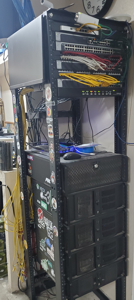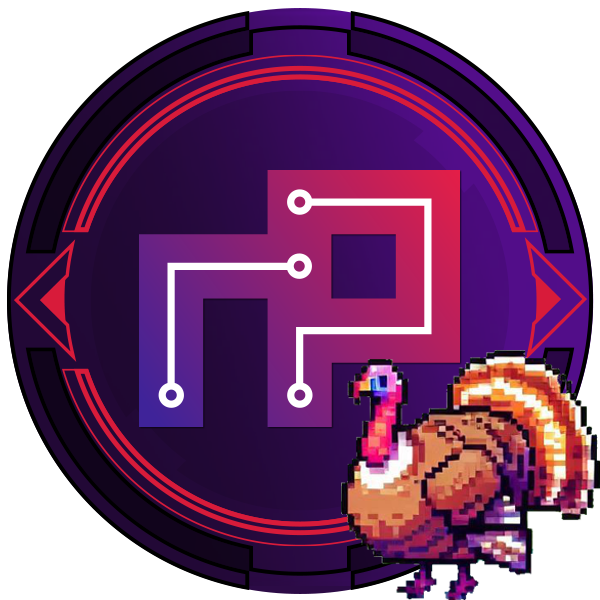Inspiration
This might seem overwhelming but, you DO NOT need to do it all at once! Start with just the Essentials Section first and remember to have fun!
Switch
- Idealy use ONE manufacture for networking components for best compatibility and configuration.
- Using an unmanaged switch will work and requires no configuration, but when one person downloads a game and everyone loses connection, you’ll have an upset LAN and might get you duct taped to the ceiling.
- A managed switch is ideal to be able to set bandwidth limitations, routing information, manage security and more.
(TIP: Netgear has great switches for specific layers, do not require subscriptions and have the best options in my opinion.) - Stacking switches if necessary is okay if allowed by the model being used. Configurations might be different between switches, check manuals.
- Suggested to setup LAG (Link Aggregation Group) using manual (static) setup or dynamic (changing, not static) setup using LACP (Link
Aggregation Control Protocol)
this is for Netgear equipment.

Cabling
- Using Cat6 or higher rated cable is recommended. Cat6A was what I used as I built a 10 Gbps (Gigabit per second) LAN that was setup in a “Bus-Star” hybrid topology configuration.
LAN Drops
- At first you might run CAT cable all over the floor with lots of extension cords. Try to keep the CAT and Power cords a foot or more apart from each other to prevent as much interference as possible.
- Getting LAN drops to the 10 people sitting in the center tables of your 20 person LAN in a 2 car garage can be a challenge. I did it by putting LAN drops and extra outlets in the veiling to plug into.
Patch Panels
- Patch panels are awesome in that you can run long lengths of cable to a wall plate keystone from the back of a patch panel. From the front you run a short cable to the switch. This is perfect for troubleshooting the network and makes it easy to re-configure the network on the fly if needed.
- Make sure you get patch panels that match the type of cables to be used
- Patch panels come in punch down and inline styles, my suggestion is to search for “inline” style keystones for your patch panel(s).
KVM Switch
- Connects many PC’s and Servers to one keyboard, mouse and monitor. Just push a button on the KVM switch to cycle between them all.
- Perfect to use on a server rack with one or many servers.
Access Point for Wi-Fi
- AP (Access Point) for Wi-Fi, connect to managed switch and set QoS (Quality of Service) to control bandwidth usage over the Wi-Fi in the LAN.
Wi-Fi
!!! Turn It Off !!!
- Disable the Wi-Fi on the Gateway or Router.
- If you have a spare router laying around, like an old one with Wi-Fi capabilities, you can use that as your AP as well. You will probably have to setup a static IP and configure a whole other LAN for the Wi-Fi but its way cheaper.
- There is nothing like having a LAN Party with 20+ people, all their phones connect to the Wi-Fi and start downloading updates to conserve data rates for each individual plan.
- This setup allows for “Free Wi-Fi” to the LAN attendees and separates the traffic from the gaming side of the LAN.
- You can add as many AP’s as you like with different SSID’s (Service Set Identifier) for multiple wireless networks for different functions. Just make sure to set the QoS for each port on the switch that each AP is connected to.
Uninterruptible Power Supply
- Great for using behind a modem, gateway and switch to keep the main network running during a power outage to reduce the risk of losing settings.
- Great for using in conjunction with server(s) for minimizing the risk of damage to server(s) in the event of a power outage, the server(s) can continue running and be shutdown properly.
- APC makes great UPS (Uninterruptible Power Supply) rack-mount and desktop solutions. They are a bit expensive but when the power goes out from a storm or just an outage, it’s nice to know your investment in servers are still online and can automatically shutdown safely.
Administration
- Setup VLAN(s) (Virtual Local Area Network) for your personal PC’s, the LAN PC’s and Server’s. This will help split up traffic instead of everything trying to run within the same routing.
- Managing network traffic and security is always changing and evolving. My suggestion is to browse the interwebs and YouTube for the most current and up to date information and practices.
- Third party software is normally asking for problems, I’ve decided to stick with Microsoft products as best as I can.
- Configuring LAN for WAN (Wide Area Network) access to game servers, so players that can’t make it to the garage LAN can still attend from home or wherever they are in the world (public library, Starbucks.)
- Static IP from ISP (Internet Service Provider) or dynamic DNS system (software that runs on a system within your network that turns your dynamic ip into a static.)
No-IP
DynDNS
Additional Notes
- Taking courses for Network Administration, System Administrator, Information Technology courses that have A+, N+, S+, CEH, Linux, Microsoft Products, Cisco, Protocols, Security, Firewalls and more is highly recommended and will only help in making the LAN a better experience for everyone!
- Get your official IT certifications!
Comptia - Content Creators I follow and highly recommend!
NetworkChuck
JayzTwoCents (people say Jay is my twin)
Professor Messer
NLB Solutions
Hardware Canucks
The Breakdown
